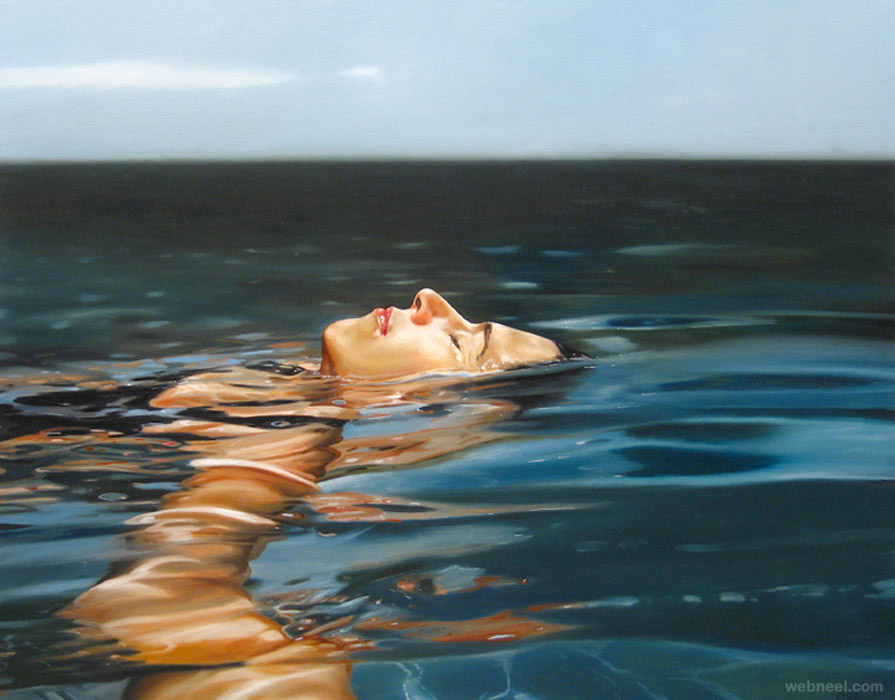
I started this painting by blocking-in the sky, cliff shadows and the shadows in the breaking waves using varying mixes of ultramarine blue, burnt sienna, titanium white and a little alizarin crimson.

It also makes it easier to add the areas in light and to get the saturation of your colours correct once you have painted your dark values. Value refers to how light or dark a subject is and by painting in the dark values first I personally find it is much easier to create atmospheric perspective in my paintings. Whenever I start a painting I always identify where the dark values and shadows are first in the scene I am painting. I am using Liquin as a medium to thin the paint and it also has the advantage of speeding up the drying time. I sketched the composition using a No.1 round brush with burnt sienna mixed with Liquin Original (Liquin). I painted this artwork on oil primed, medium-weave Belgian linen that is mounted to a panel. 1/4” ivory dagger Painting Demonstration.Here is a list of the brushes I used in this painting: The colours I used in this painting are as follows: Here you can see the focal area is to the right of the centre and there is a high horizon line. When designing a composition for a painting avoid having centred objects, centred lines and repeating masses as this will spoil the composition. This composition is fairly simple as it is intended to be a study of ocean waves. The translucent area of the breaking wave is the main focal area. Please feel free to use or copy this photo if you would like to have a go at painting this artwork.
REALISTIC OCEAN PAINTING HOW TO
Want to Learn How to Paint Seascapes? Reference Photo.



 0 kommentar(er)
0 kommentar(er)
